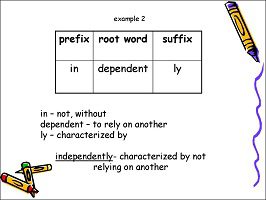Lexical morpheme examples with properties
Lexical morpheme
We can identify a lexical morpheme, lexeme, or lexical morpheme as one that provides the fundamental semantic content of a word. In this way, it becomes the base to which other grammatical class morphemes can be added. In this article we will provide you the examples of lexical morpheme.
But, to know exactly what the lexical morpheme consists of, we must also know what a morpheme is. In this case, we mean a minimal grammatical or significant unit. It must be remembered that most authors consider the minimum grammatical unit as an adequate definition of the morpheme, since, in reference to meaning, there are minimum units to which a specific meaning cannot always be attributed, as happens with interfixes.
Examples of lexical morpheme
Now, the best way to know what a lexical morpheme is is to see it in examples. Next, we can observe the minimum unit with lexical meaning , that is, a part that does not vary, but which is the lexeme, which we see in capital letters:
As we observe below, the lexemes join the morphemes, expressing grammatical meaning:
- Modern
- MODERN
- MODERN
Other types of morphemes
As we have already commented on many occasions, our language is very rich, due to which there is a great variety of grammar and spelling rules, as well as different types. In this case, we can observe different classes of morphemes:
- Free morpheme , which is the one formed by the word itself, without additions: flower, clock, sea.
- Linked morpheme , which appears next to another morpheme: flourish, truck.
They are also known as lexemes, so you might see them by these two names:
- Independent lexem , which is not attached to a morpheme: for, and, two.
- Dependent lexem , which joins other morphemes: pat-o, cam-a.
Furthermore, it should be added that the list of lexical morphemes can be expanded at any time when new meanings or words are incorporated into the language.
Morpheme properties
Finally, we are going to know some properties that are inherent to all morphemes, and that help them to be identified more easily:
Difference between lexical and grammatical morphemes
In addition to lexical morphemes, we also find grammatical morphemes , known as gramemes . These are the units that vary in a word, and that can express different meanings or relationships, although they do not alter the basic referential meaning. They are not usually autonomous and are subject to grammatical restrictions.
There are also two types:
- Inflectional grammes : gender or number in nouns, determiners, adjectives, etc .: boy, girl.
- Derivative grammes : they provide nuance of meaning, mainly at the grammatical level, such as suffixes, prefixes or interfixes: PREheat.
We hope that you have understood Lexical morpheme examples.
